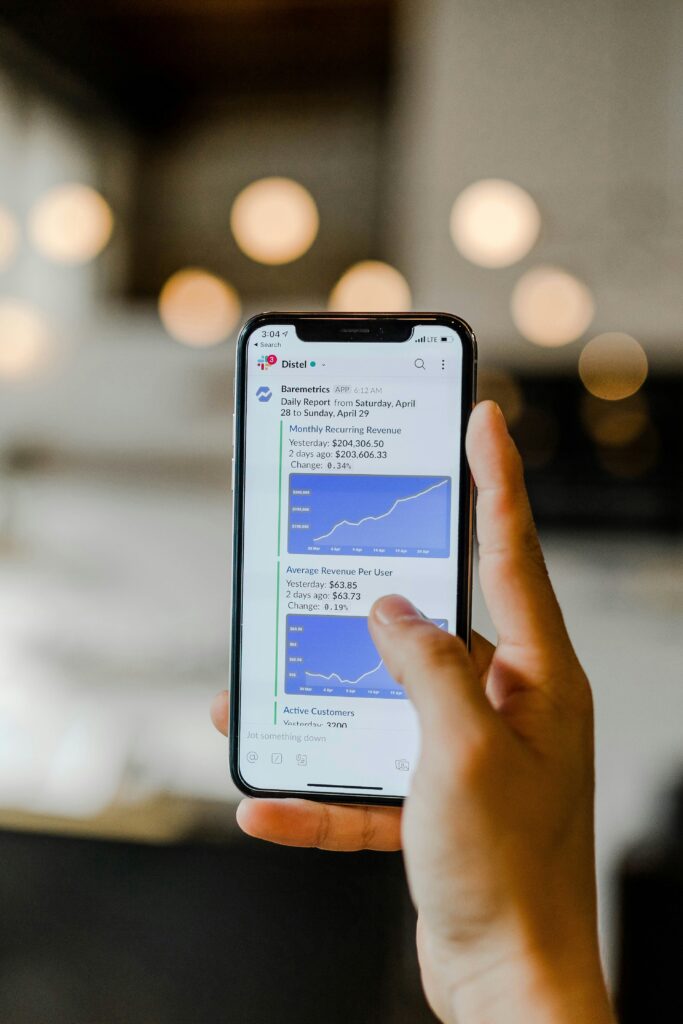Digital Asset Valuation Vs. Traditional Asset Valuation
Digital asset valuation is different from traditional asset valuation because the digital asset market is so new and hasn’t been fully established. When it comes to traditional asset valuation, analysts use established methods such as discounted cash flow (DCF), comparable company analysis, and market multiples to determine the value of assets. These methods rely on historical data, financial ratios, and market trends to make informed decisions about the worth of an asset. Other methods for traditional assets include (some will also be able to be used for digital asset evaluation) but are not limited to the following:
Book Value:
- Book value is the net asset value of a company, calculated by subtracting liabilities from assets. It provides a measure of the company’s intrinsic value based on its balance sheet.
Return on Investment (ROI):
- ROI measures the profitability of an investment relative to its cost. It is calculated by dividing the net profit from an investment by its initial cost.
Net Present Value (NPV):
- NPV is a financial metric used in capital budgeting to evaluate the profitability of an investment. It calculates the present value of expected cash flows minus the initial investment.
Capital Asset Pricing Model (CAPM):
- CAPM is a model used to determine the expected return on an investment based on its risk. It incorporates the risk-free rate, market risk premium, and beta of the asset.
Digital Asset Valuation
Digital asset valuation, on the other hand, is a relatively new concept that involves valuing intangible assets that exist purely in digital form. Unlike traditional assets, digital assets do not have physical presence and are often decentralized, making them more challenging to value. In later sections, we explain why most people refer to digital asset valuation as intangible but there is actually a tangible aspect to these assets.
Digital Assets and Tangibility:
- Digital assets lack physical existence. Instead, they are represented by digital records or cryptographic tokens on a blockchain or other digital platforms. Examples include cryptocurrencies (Bitcoin, Ethereum), non-fungible tokens (NFTs), and digital securities.
- The intangible nature of digital assets poses a unique challenge when it comes to valuation. Unlike traditional assets with tangible attributes, the value of digital assets is often derived from factors like network effects, user adoption, technological innovation, and scarcity.
- Valuation methods for digital assets may include models specific to their characteristics, such as tokenomics (analyzing the economics of a token), network value models, or sentiment analysis.
Differences in Valuation
One of the key differences between traditional and digital asset valuation is the lack of historical data for digital assets. Since digital assets are relatively new, there isn’t as much historical data available to analyze and predict future performance. This makes it more difficult to apply traditional valuation methods to digital assets.
Another difference is the volatility of digital assets. Cryptocurrencies, for example, are known for their extreme price fluctuations, which can make it challenging to determine a stable valuation. This volatility can be both a risk and an opportunity for investors, as it can lead to significant gains or losses in a short amount of time.

Tangibility:
- Traditional assets are often tangible, such as real estate, commodities, or physical goods. Their value is derived from their physical properties.
- Digital assets, on the other hand, lack physical existence. They are typically represented by cryptographic tokens or digital records on a blockchain.
- Though when we look at the dot.com boom, most people would say that the internet is not tangible, though it is a concrete instrument and asset each person uses every single day. Now that we have had these internet companies and assets around and implemented, they are now tangible to most of us. Digital assets will soon be seen like this.
Market Access and Liquidity:
-
- Traditional assets are often traded on traditional financial markets like stock exchanges. The liquidity and accessibility of these markets can vary based on regulatory environments and market conditions.
- Digital assets, particularly cryptocurrencies and tokens, often trade on decentralized exchanges and are accessible globally 24/7. This can result in higher liquidity and faster settlement times compared to some traditional assets.
Regulatory Environment:
- Traditional assets are subject to well-established regulatory frameworks that vary across jurisdictions. Compliance with these regulations is a crucial aspect of traditional asset valuation.
- Digital assets operate in a relatively newer and evolving regulatory landscape. The lack of consistent global regulations can introduce additional uncertainties and challenges in valuing digital assets.
Income Generation:
- Traditional assets, such as stocks or bonds, may generate income through dividends, interest, or rent. Cash flows play a significant role in valuing these assets using methods like discounted cash flow (DCF) analysis.
- Many digital assets, especially cryptocurrencies, may not generate direct income in the traditional sense. Valuation methods often focus on factors like network utility, user adoption, and potential future demand.
Ownership and Custody:
- Ownership of traditional assets is often recorded through legal documents, certificates, or centralized databases. Custody is typically managed through banks, brokers, or other financial institutions.
- Digital assets utilize cryptographic keys for ownership and are often stored in digital wallets. Custody solutions range from self-custody options to third-party custodians specializing in digital assets.
Volatility and Risk:
- Digital assets, particularly cryptocurrencies, are known for their higher volatility compared to many traditional assets. Price fluctuations can be significant over short periods, introducing higher risk and uncertainty in valuation.
- Traditional assets may exhibit lower volatility, providing a more stable valuation environment. However, they are still subject to market risks and economic factors.
Valuation Models:
- Traditional assets often use well-established valuation models such as discounted cash flow (DCF), comparable company analysis (CCA), or market multiples.
- Digital assets may require unique valuation models, depending on their nature. For example, token-based projects may use tokenomics, network value models, or other blockchain-specific methodologies.
It’s essential to note that the valuation of both traditional and digital assets involves a combination of quantitative and qualitative factors. The evolving nature of digital assets may lead to the development of new valuation methodologies over time. Additionally, factors such as technological advancements, regulatory changes, and market sentiment can impact the valuation dynamics of both asset types.
Challenges in Digital Asset Valuation
Due to the unique characteristics of digital assets, there are several challenges in valuing them accurately. One of the main challenges is the lack of regulation and oversight in the digital asset market, which can lead to manipulation and fraud. This uncertainty makes it harder for investors to determine the true value of digital assets.
Additionally, the rapid pace of technological advancements in the digital asset space can also pose challenges for valuation. New technologies and platforms are constantly being developed, which can affect the value of existing digital assets. Keeping up with these changes and adapting valuation methods accordingly is essential for accurate valuation.

If you are struggling with understanding digital assets, it will be even harder to understand digital asset evaluation. Are you going to let that hold you back from investing in a new technological advancement? This is a new market and can be risky, but this is the exact reason you must educate yourself rather than shying away. You can educate yourself and take advantage of this market in many different ways. One way is the CryptoStart Program that not only teaches you the basics and foundation of the digital asset market, but it also teaches you how and what to invest in.
Importance of Digital Asset Valuation
As digital assets become more mainstream and widely adopted, the importance of digital asset valuation continues to grow. In order to attract investors, companies and projects need to demonstrate a clear understanding of the value of their digital assets. Accurate valuation and trend analysis can also help companies make informed decisions about fundraising, partnership agreements, and strategic planning. There are many platforms that can help you with digital asset valuation. Blockchain Backer is a great resource in this area:
- Price Charts:
- Technical analysts often use price charts to visually represent historical price movements. Common types of charts include candlestick charts, line charts, and bar charts.
- Technical Indicators:
- Various technical indicators are employed to analyze price trends, momentum, and volatility. Examples include Moving Averages (MA), Relative Strength Index (RSI), Moving Average Convergence Divergence (MACD), and Bollinger Bands.
- Support and Resistance Levels:
- Support levels are price points where an asset tends to stop falling, and resistance levels are where it tends to stop rising. These levels are identified through historical price movements and play a crucial role in technical analysis.
- Trend Analysis:
- Identifying trends is a fundamental aspect of technical analysis. Trends can be upward (bullish), downward (bearish), or sideways. Analysts use trendlines and patterns to identify and validate trends.
Embrace Change and New Valuation Markets
In conclusion, digital asset valuation is indeed different from traditional asset valuation due to the unique nature of digital assets and the challenges they present. As the digital asset market continues to evolve, it is essential for investors, analysts, and companies to adapt their valuation methods to accurately assess the value of digital assets. By understanding these differences and challenges, investors can make more informed decisions in this rapidly growing market. One little change in the digital asset market can make a huge ripple effect in the valuation of the market.
So, the next time you hear about digital asset valuation, remember the unique characteristics that set it apart from traditional asset valuation methods. Stay informed, stay updated, and make smart investment decisions in the world of digital assets


